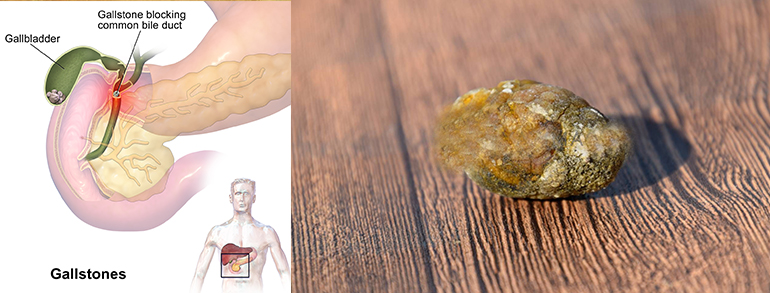Gallbladder Calculus
The Gallbladder is a small pouch like organ that stores the bile that is produced by the liver. The digestive fluid, also referred to as gall is required for the digestion of fats in food. Produced by the liver, the digestive fluid flows through little vessels into the larger internal organ ducts and ultimately through the cystic duct (parts of the biliary tree) into the bladder, where it is stored.
At any one time, 30 to 60 milliliters of bile is stored within the gallbladder. When food containing fat enters the canal, it stimulates the secretion of cholecystokinin (CCK) from I cells of the small intestine and small intestine. In response to cholecystokinin, the bladder rhythmically contracts and releases its contents into the common canal, eventually exhausting into the small intestine. The bile emulsifies fats in partly digested food, thereby assisting their absorption. Bile consists primarily of water and digestive fluid salts, and also acts as a means of eliminating bilirubin, a product of hemoglobin metabolism, from the body.
The gallbladder stores and releases bile to help digest fats. Gallstones, stone-like objects often made of cholesterol or bilirubin, can develop in the gallbladder or bile ducts. These stones can cause pain and other complications. Treatment options are available in ayurveda.
Gallstones are most commonly found in the gallbladder, as cholesterol stones. Gallstones can also travel from the gallbladder to the common bile duct, which is the largest of the ducts (pipes) in the liver.
Common bile duct stones are much less common than gallstones. Stones that find their way into the common bile duct can create more serious medical situations than just gallstones that remain in the gallbladder. Common bile duct stones can block the common bile duct, resulting in a serious infection called cholangitis. These stones can also cause pancreatitis, a painful condition caused by inflammation of the pancreas.


